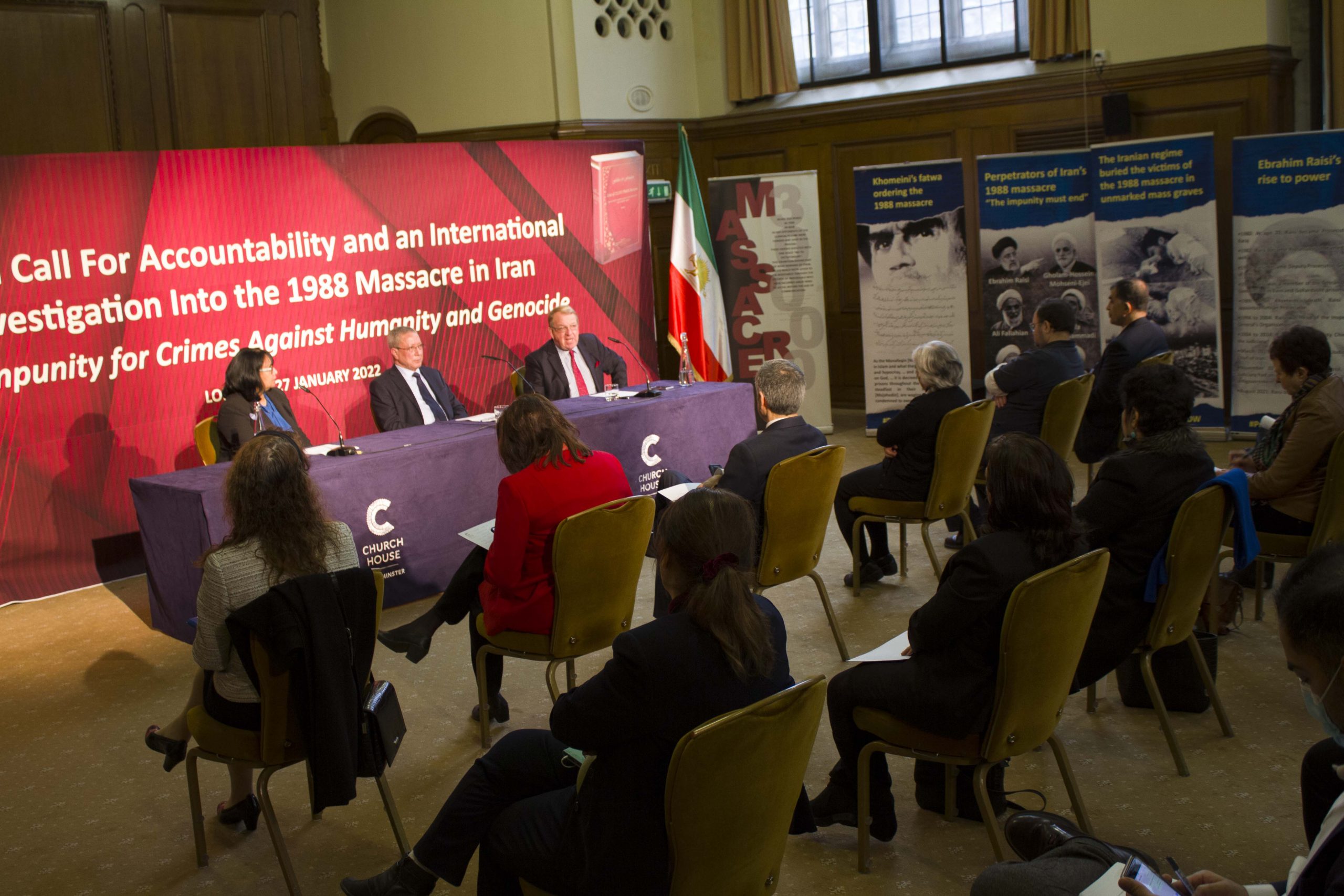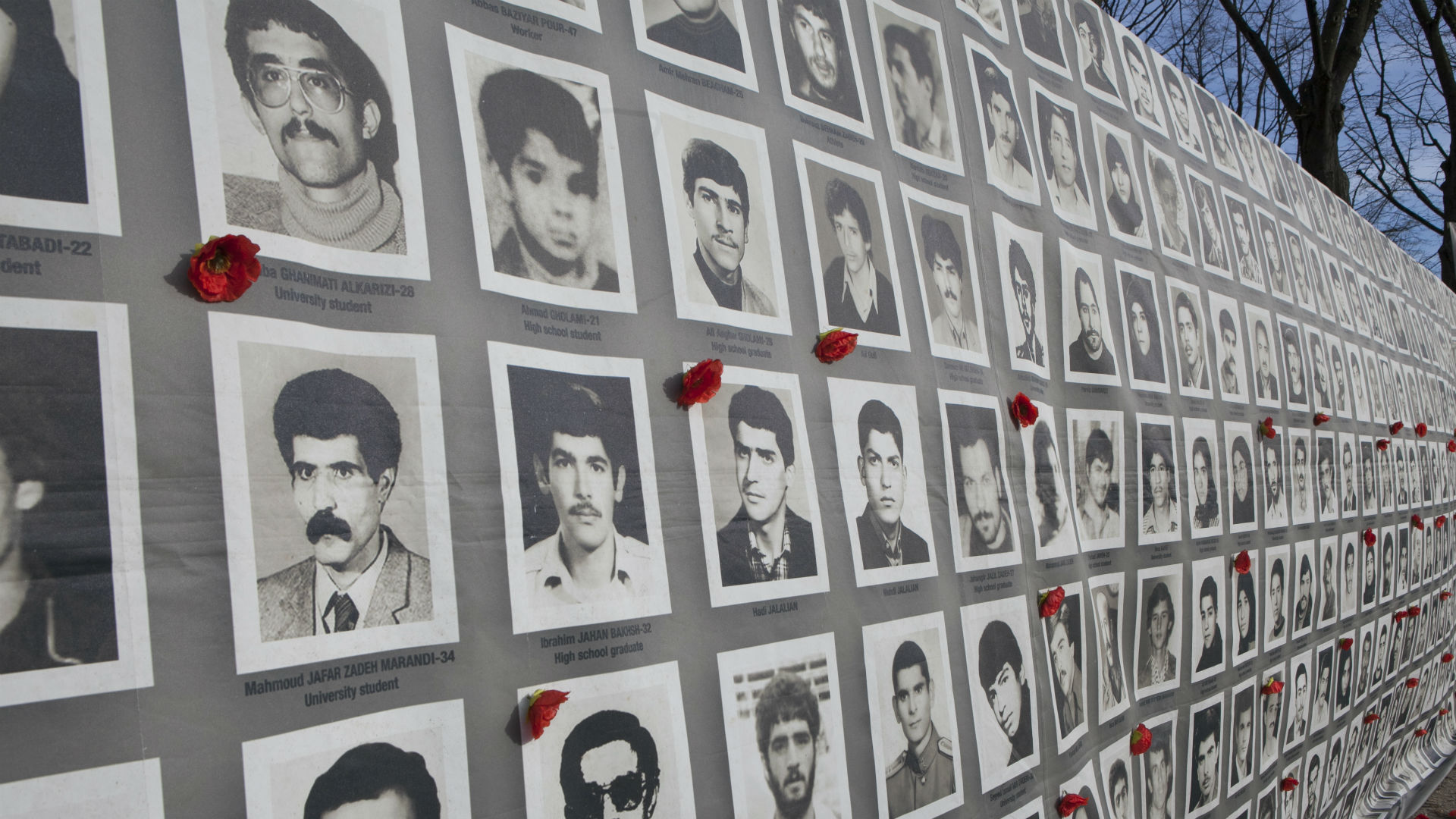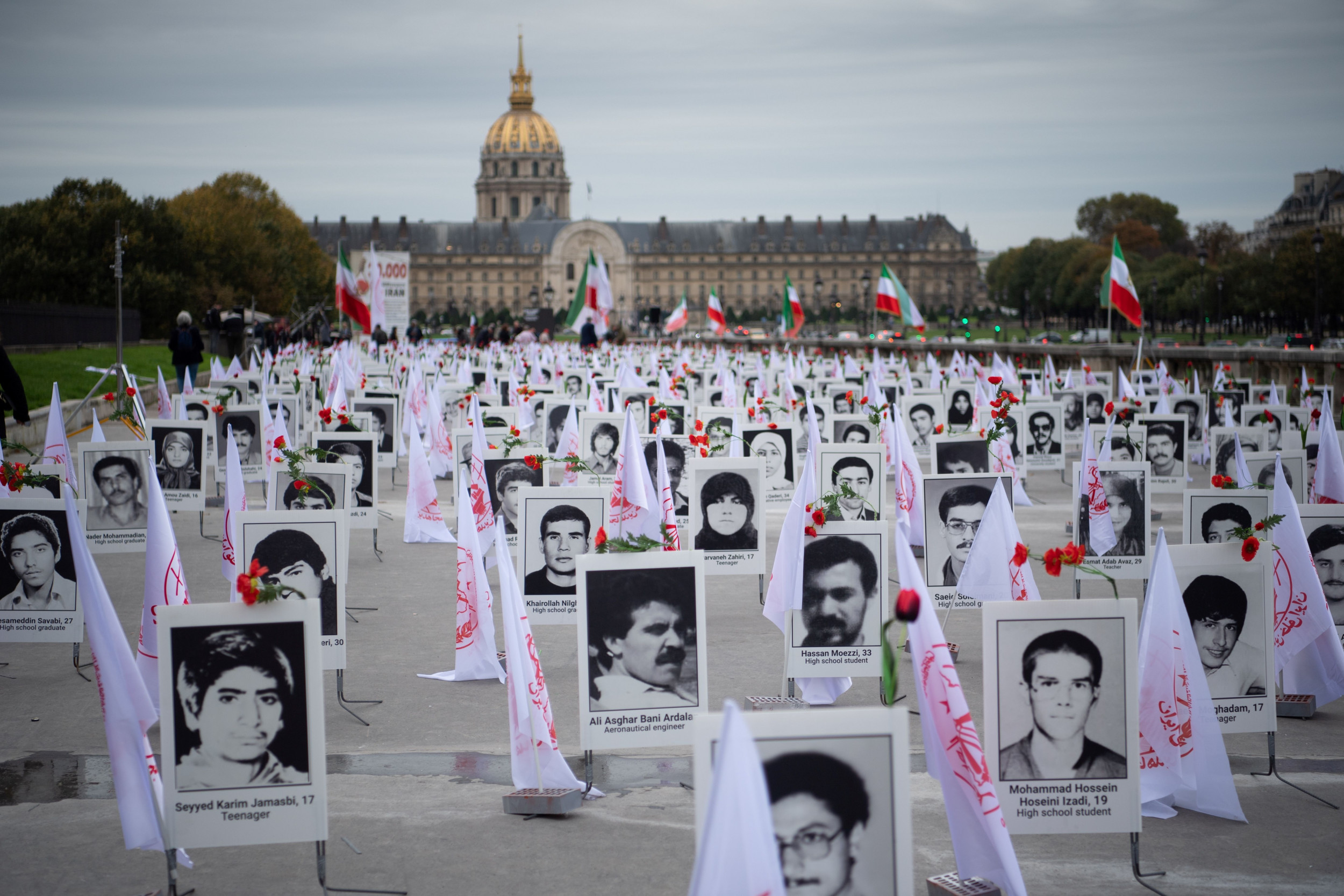1988 Iran: Unveiling The Unspeakable Massacre Of Political Prisoners
**The year 1988 in Iran marks one of the darkest and most systematically suppressed chapters in the nation's modern history. While the Iran-Iraq War was drawing to a close, a different, more insidious conflict was escalating within the walls of Iranian prisons, far from the battlefields. This period witnessed a brutal, state-sanctioned purge, the echoes of which continue to resonate through the lives of countless families and human rights advocates worldwide. It was a time when the very fabric of justice was torn apart, and thousands of lives were extinguished in secret, leaving behind a legacy of trauma and an unyielding demand for truth and accountability.**
The events of 1988 Iran represent a profound breach of human rights, a calculated act of violence against political dissenters that remains largely unacknowledged by the Iranian authorities to this day. This article delves into the harrowing details of what transpired, drawing on the testimonies of survivors, the tireless work of victim's families, and the meticulous documentation by human rights organizations. Our aim is to shed light on this crucial historical event, emphasizing its profound impact and the ongoing struggle for justice.
Table of Contents
- Setting the Stage: Iran in 1988
- The Unfolding Horror: July to September 1988
- The Supreme Order: Ayatollah Khomeini's Decree
- The Scale of Atrocity: Thousands Disappeared
- Seeking Justice: The Role of JVMI and Advocates
- Documenting the Undocumented: Reports and Analysis
- The Enduring Legacy of 1988 Iran
- Call for Accountability: A Global Imperative
Setting the Stage: Iran in 1988
By the summer of 1988, Iran was at a critical juncture. The devastating eight-year war with Iraq, which had claimed hundreds of thousands of lives and crippled the economy, was finally drawing to a close. A ceasefire was on the horizon, signaling a potential new era for the Islamic Republic. However, beneath the surface of this apparent peace, a chilling plan was being meticulously executed within the country's penal system. The focus of the world's attention was largely on the war's end, diverting scrutiny from the grim events unfolding internally. This provided a clandestine cover for the Iranian authorities to carry out an unprecedented act of repression, targeting those deemed a threat to the regime's ideological purity. The stage was set for a tragedy that would forever scar the nation.
- Arikytsya Of Leaks
- When Did Jennifer And Brad Divorce
- Hubflix Hdshub
- Aja Wilson Boyfriend
- Jameliz Onlyfans
The Unfolding Horror: July to September 1988
The period between July and September 1988 saw the systematic execution of thousands of political prisoners across Iran. This was not a spontaneous outburst of violence but a calculated, coordinated operation designed to eliminate dissent. The process began with an eerie silence, as the outside world was cut off from those incarcerated.
The Silence Descends: Prisons Go Dark
**On July 19, 1988**, a chilling directive swept through Iran's major prisons. Iranian authorities closed several key facilities, immediately preventing all visits and phone calls. Families, who had long relied on these lifelines to maintain contact with their imprisoned loved ones, suddenly found themselves in a terrifying void. Letters, care packages, and even essential medicine were refused, creating an impenetrable wall of silence around the inmates. This abrupt and absolute cessation of communication was the first ominous sign that something deeply disturbing was underway. The sudden isolation of thousands of prisoners from the outside world was a deliberate move, designed to ensure that the atrocities about to be committed would remain hidden from public view and international scrutiny.
The Unseen Courts: Justice Denied
Adding another layer to the clandestine operation, courts across the country went on an unscheduled holiday. This seemingly innocuous act served a sinister purpose: to prevent judges and legal professionals from discovering what was happening to their imprisoned relatives or clients. The absence of judicial oversight meant that the executions were carried out without any semblance of due process, legal recourse, or public record. These were not trials in any recognizable sense; they were summary judgments delivered by "Death Commissions" that often lasted mere minutes, sealing the fate of individuals who had already spent years in prison. The deliberate suspension of the legal system underscored the extrajudicial nature of the mass killings, highlighting a complete disregard for the rule of law and fundamental human rights during this dark chapter of 1988 Iran.
The Supreme Order: Ayatollah Khomeini's Decree
The horrific events of 1988 Iran were not the result of rogue elements or localized actions. They were orchestrated from the very top. In 1988, Iranian authorities acted directly on the orders of Supreme Leader Ayatollah Ruhollah Khomeini. He issued a fatwa, a religious edict, effectively calling for the execution of all "hypocrites" (a term often used to refer to members of the People's Mojahedin Organization of Iran, PMOI/MEK) and those deemed to be "enemies of God" who persisted in their opposition to the Islamic Republic. This decree provided the ideological and legal justification, from the regime's perspective, for the summary and extrajudicial execution of thousands of political prisoners across the country.
Khomeini's fatwa was interpreted broadly by the "Death Commissions" that were hastily formed in prisons. These commissions consisted of a religious judge, a prosecutor, and an intelligence ministry representative. Their mandate was to identify prisoners who were deemed to be "steadfast" in their opposition, even if they had already served their sentences or were nearing release. The questions posed to prisoners were often simple, designed to elicit answers that would confirm their political affiliation or loyalty. A refusal to denounce their organizations, a continued belief in their ideology, or even a simple "no" to a question about their faith in the Islamic Republic could be a death sentence. This direct order from the highest authority transformed the prisons into killing fields, demonstrating the absolute power wielded by the Supreme Leader and the regime's ruthless determination to crush all forms of dissent.
The Scale of Atrocity: Thousands Disappeared
The sheer scale of the 1988 massacre in Iran is staggering. Between July and September 1988, the Iranian authorities forcibly disappeared and extrajudicially executed thousands of imprisoned political dissidents in secret. The exact number remains contested, with estimates ranging from several thousand to over 30,000, as claimed by some human rights groups and victim families' associations like JVMI. Regardless of the precise figure, it represents one of the largest state-sponsored mass killings of political prisoners in modern history. These individuals, many of whom had already endured years of incarceration, were denied their most basic human rights, including the right to life, fair trial, and even a proper burial.
Unmarked Graves: The Final Resting Place
The bodies of the executed prisoners were mostly dumped in unmarked mass graves. This deliberate act was intended to erase any trace of the crimes, to deny families the solace of a burial site, and to prevent any future investigations. Families were never informed of the executions, nor were they told where their loved ones were buried. This practice inflicted immense psychological suffering on the relatives, who were left in a perpetual state of limbo, searching for answers that the regime refused to provide. The existence of these unmarked graves serves as a stark, albeit hidden, testament to the brutality of the 1988 Iran massacre and the regime's efforts to cover up its crimes. Identifying and preserving these sites remains a crucial part of the ongoing quest for justice and remembrance.
Not the First, Not the Last: A Pattern of Repression
While the 1988 executions were uniquely devastating in their scale and systematic nature, they were neither the first nor the last such tragic events to take place in Iran. The Islamic Republic has a long and documented history of suppressing dissent through arbitrary arrests, torture, and executions. From the early days of the revolution, various political groups, including monarchists, communists, and different factions of the left, faced severe repression. The 1988 massacre, however, stands out due to its sheer magnitude and the calculated manner in which it was carried out, targeting a specific group of political prisoners at a very particular moment in time. This pattern of repression underscores a fundamental aspect of the Iranian regime's approach to maintaining power: a willingness to use extreme violence against perceived threats to its authority, a chilling reality that continues to impact human rights in Iran today.
Seeking Justice: The Role of JVMI and Advocates
Despite the regime's efforts to erase the memory of the 1988 massacre, the quest for justice has never ceased. JVMI (Justice for Victims of the 1988 Massacre in Iran) is a prominent association of families of the victims of the 1988 massacre, dedicated to bringing accountability for the estimated 30,000 political prisoners who perished. These families, many of whom have endured decades of pain and silence, are at the forefront of the movement, tirelessly campaigning for recognition of the atrocities and prosecution of those responsible.
Their efforts are supported by a growing coalition of former political prisoners, international lawyers, and legal experts who have a profound interest in obtaining justice for the massacre and for all victims of executions in Iran. These advocates work to collect testimonies, document evidence, and raise international awareness about the ongoing impunity enjoyed by the perpetrators. They emphasize that the 1988 massacre constitutes a crime against humanity, and as such, there is no statute of limitations on its prosecution. The unwavering commitment of JVMI and its allies ensures that the memory of the victims of 1988 Iran is not forgotten and that the call for accountability remains loud and clear on the global stage.
Documenting the Undocumented: Reports and Analysis
A crucial aspect of the struggle for justice for the 1988 Iran massacre is the meticulous documentation and analysis of the Iranian government’s actions. Various human rights organizations, legal experts, and independent researchers have dedicated significant resources to compiling comprehensive reports on the massacre. These reports serve as vital historical records, detailing the timeline of events, the identities of victims and perpetrators, the methods used, and the legal arguments for prosecuting those responsible.
These documents often rely on a combination of sources:
- Survivor Testimonies: First-hand accounts from those who endured the prisons and witnessed parts of the massacre, or who were spared at the last moment.
- Family Accounts: Narratives from relatives who experienced the abrupt cut-off of communication, the refusal of information, and the subsequent discovery (or lack thereof) of their loved ones' fates.
- Defector Information: Insights from former Iranian officials or insiders who have provided details about the internal workings of the regime and the decision-making process behind the executions.
- Forensic Evidence: Although challenging given the unmarked graves, any available forensic or circumstantial evidence related to the mass burial sites.
The Enduring Legacy of 1988 Iran
The legacy of the 1988 massacre in Iran extends far beyond the immediate victims and their families. It has profoundly shaped the political landscape of Iran and continues to influence its human rights record. For the Iranian people, especially those who lived through that era, the events of 1988 represent a stark reminder of the regime's capacity for brutality and its intolerance of dissent. This collective trauma has fostered a deep-seated fear, yet also a resilient determination among many to seek truth and justice.
Internationally, the massacre remains a significant stain on Iran's human rights record. It is frequently cited by human rights organizations and governments as an example of gross violations that demand accountability. The impunity enjoyed by the perpetrators, many of whom still hold positions of power within the Iranian establishment, sends a chilling message about the lack of rule of law and justice in the country. The silence surrounding these events within Iran's official narrative also highlights the regime's ongoing efforts to control historical memory and suppress any narratives that challenge its legitimacy. The enduring impact of 1988 Iran serves as a powerful testament to the need for continued vigilance and advocacy for human rights.
Call for Accountability: A Global Imperative
The call for accountability for the 1988 massacre in Iran is not merely a historical exercise; it is a vital contemporary imperative. As long as the perpetrators of these crimes against humanity walk free, justice remains elusive, and the message is sent that such atrocities can be committed without consequence. International human rights law provides frameworks for prosecuting such grave violations, even decades after they occur.
The international community has a moral and legal obligation to press for independent investigations into the 1988 massacre. This includes:
- Establishing a UN-mandated inquiry: To thoroughly investigate the events, identify perpetrators, and ensure evidence is preserved.
- Universal Jurisdiction: Encouraging states to exercise universal jurisdiction to prosecute individuals suspected of involvement in the massacre, regardless of where the crimes were committed.
- Sanctions: Imposing targeted sanctions on officials implicated in the massacre who continue to evade justice.
- Support for Victims and Families: Providing support and recognition for the victims' families, who have suffered immensely and continue to seek answers.
Conclusion
The events of 1988 Iran represent a profound and tragic chapter in human history, a systematic and unacknowledged massacre of political prisoners orchestrated at the highest levels of the Iranian state. From the chilling silence that descended upon prisons in July 1988 to the clandestine executions and the dumping of bodies in unmarked mass graves, the scale of the atrocity is undeniable. The unwavering efforts of victim families, such as JVMI, and dedicated human rights advocates continue to pierce through the veil of secrecy, tirelessly documenting the facts and demanding accountability for these crimes against humanity.
The legacy of 1988 Iran is a stark reminder of the devastating consequences of unchecked power and the suppression of dissent. It underscores the critical importance of upholding human rights, ensuring due process, and holding perpetrators of mass atrocities to account, no matter how long it takes. We invite you to share this article to help raise awareness about these vital historical events and the ongoing struggle for justice. Your engagement helps ensure that the voices of the victims are heard and that the pursuit of truth continues. For more in-depth analyses of human rights issues, explore other articles on our site.
- King Nasir Real Name
- Daisy From Dukes Of Hazzard Now
- Xxbrist
- Jesse Metcalfe Children
- Arikytsya Lesked

Home - Iran 1988 Massacre

Iran 1988 massacre | The New Arab

It's Not Too Late To Hold Iran's Regime to Account for its Greatest